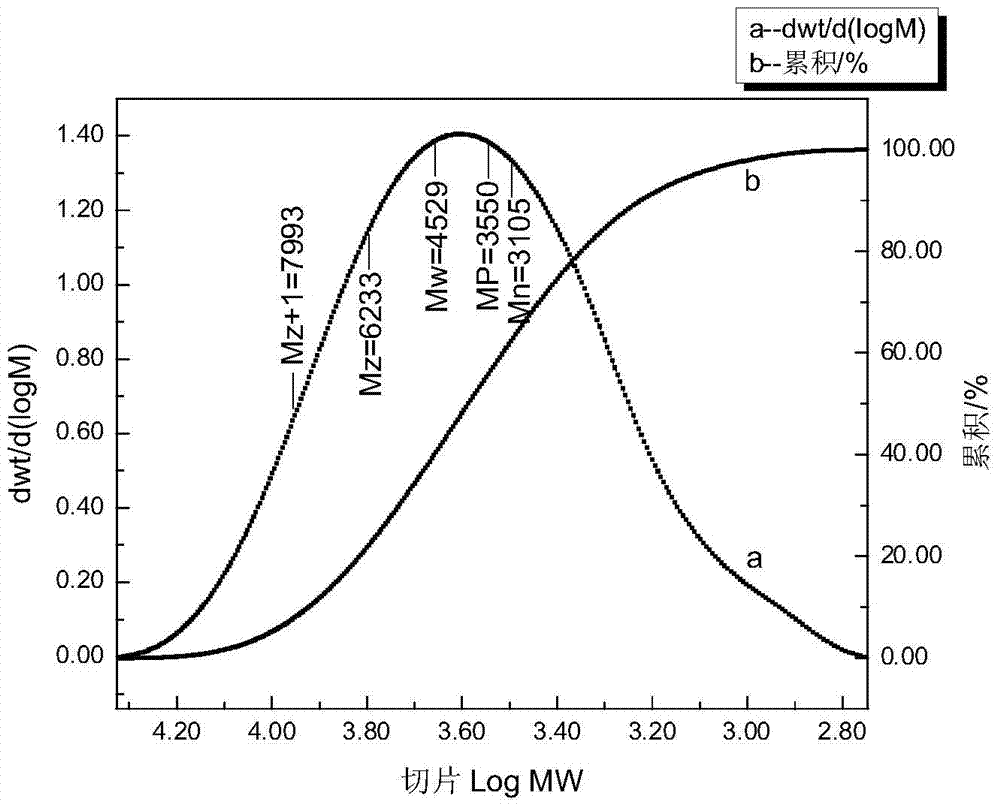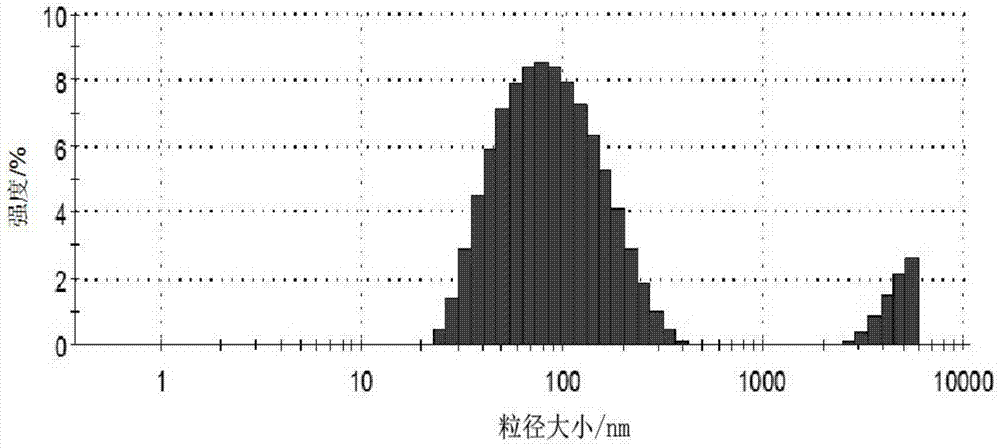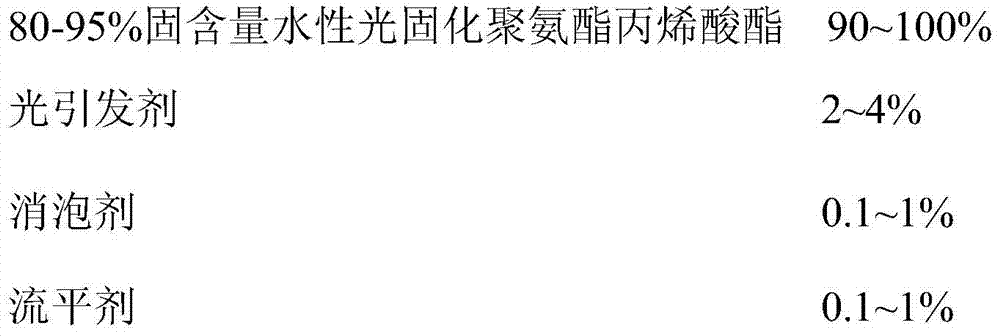A kind of 80-95% solid content aqueous photocurable polyurethane acrylate and its preparation method
A technology of urethane acrylate and hydroxypropyl acrylate, which is applied in the field of 80-95% solid content water-based photocurable urethane acrylate and its preparation, can solve the problem that the solid content is only 50-60%, the strength is only 6.0MPa, and the solid content is only 50%. % and other issues, to achieve the effect of increasing equipment utilization, appropriate particle size distribution width, and shortening drying time
- Summary
- Abstract
- Description
- Claims
- Application Information
AI Technical Summary
Problems solved by technology
Method used
Image
Examples
Embodiment 1
[0044] (1) Synthesis of polyurethane prepolymer I: Add 32.5g isophorone diisocyanate (IPDI) and 24.4g polyoxypropylene glycol (Mw=1000) in a dry four-necked flask equipped with a stirrer and a thermometer, Add 0.06g of catalyst dibutyltin dilaurate dropwise, the reaction is carried out in a constant temperature water bath, the temperature is raised to 85°C, and the reaction is kept at this temperature for about 1.5h, and the content of -NCO is measured by the di-n-butylamine method. When the value is close to or lower than the theoretical value, the semi-blocked polyurethane prepolymer I is obtained;
[0045] (2) Synthesis of polyurethane prepolymer II: cool down to 70°C, weigh 9.8g of dimethylolpropionic acid (DMPA), dissolve it with 18.6g of acetone, place it in a dropping funnel, drop it into a four-necked flask, The dropping rate is 3s / drop, keep this temperature for 3h, during which a proper amount of acetone is added to adjust the viscosity, and the content of -NCO is me...
Embodiment 2
[0050] (1) Synthesis of polyurethane prepolymer I: add 38.1g of isophorone diisocyanate (IPDI) and 11.4g of polyethylene glycol (Mw=400) into a dry four-necked flask equipped with a stirrer and a thermometer, drop Add 0.05g catalyst dibutyltin dilaurate, react in a constant temperature water bath, raise the temperature to 85°C, keep this temperature for about 1.5h, measure the content of -NCO by the di-n-butylamine method, when the content of -NCO is the same as the theoretical value When it is close to or lower than the theoretical value, the semi-blocked polyurethane prepolymer I is obtained;
[0051] (2) Synthesis of polyurethane prepolymer II: cool down to 70°C, weigh 11.5g of dimethylolpropionic acid (DMPA), dissolve it with 23.0g of acetone, place it in a dropping funnel, drop it into a four-necked flask, The dropping rate is 3s / drop, keep this temperature for 3h, during which a proper amount of acetone is added to adjust the viscosity, and the content of -NCO is measure...
Embodiment 3
[0056] (1) Synthesis of polyurethane prepolymer I: add 34.6g isophorone diisocyanate (IPDI), 13.0g polyoxypropylene diol (Mw=1000) and 5.2g polyethylene glycol (Mw=400), add 0.05g catalyst dibutyltin dilaurate dropwise, the reaction is carried out in a constant temperature water bath, the temperature is raised to 85°C, and the temperature is maintained for about 1.5h, and the dibutylamine method is used. Measure the content of -NCO, when the content of -NCO is close to or lower than the theoretical value, the semi-blocked polyurethane prepolymer I is obtained;
[0057] (2) Synthesis of polyurethane prepolymer II: cool down to 70°C, weigh 9.6g of dimethylolpropionic acid (DMPA), dissolve it with 19.2g of acetone, put it in a dropping funnel, drop it into a four-necked flask, The dropping rate is 3s / drop, keep this temperature for 3h, during which a proper amount of acetone is added to adjust the viscosity, and the content of -NCO is measured by the di-n-butylamine method. When ...
PUM
| Property | Measurement | Unit |
|---|---|---|
| particle size | aaaaa | aaaaa |
| strength | aaaaa | aaaaa |
| viscosity | aaaaa | aaaaa |
Abstract
Description
Claims
Application Information
 Login to View More
Login to View More - R&D
- Intellectual Property
- Life Sciences
- Materials
- Tech Scout
- Unparalleled Data Quality
- Higher Quality Content
- 60% Fewer Hallucinations
Browse by: Latest US Patents, China's latest patents, Technical Efficacy Thesaurus, Application Domain, Technology Topic, Popular Technical Reports.
© 2025 PatSnap. All rights reserved.Legal|Privacy policy|Modern Slavery Act Transparency Statement|Sitemap|About US| Contact US: help@patsnap.com



